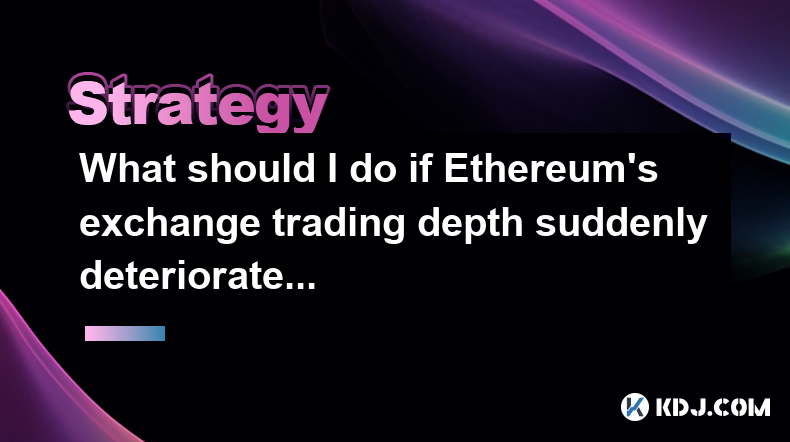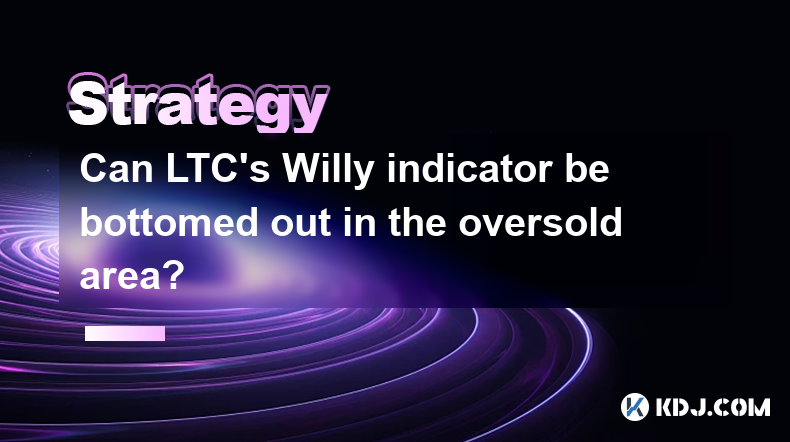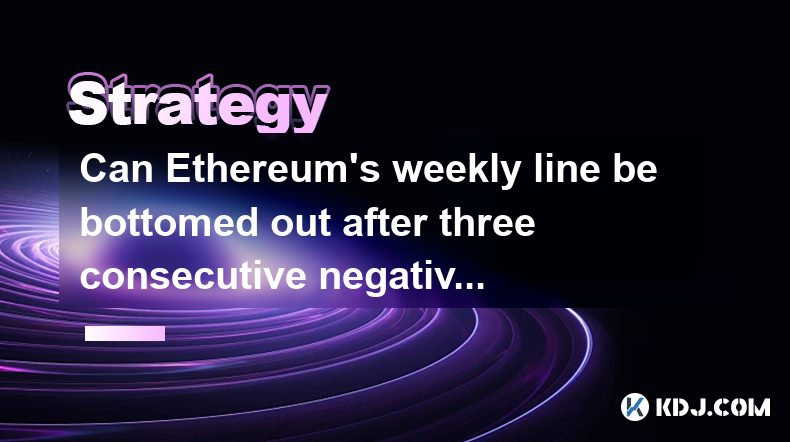-
 Bitcoin
Bitcoin $92,342.0445
-2.04% -
 Ethereum
Ethereum $1,742.5109
-2.97% -
 Tether USDt
Tether USDt $1.0002
0.00% -
 XRP
XRP $2.1414
-6.26% -
 BNB
BNB $596.8356
-2.82% -
 Solana
Solana $146.9564
-3.93% -
 USDC
USDC $1.0000
0.00% -
 Dogecoin
Dogecoin $0.1722
-6.04% -
 Cardano
Cardano $0.6791
-4.10% -
 TRON
TRON $0.2435
-1.24% -
 Sui
Sui $3.0108
2.39% -
 Chainlink
Chainlink $14.3657
-3.74% -
 Avalanche
Avalanche $21.9042
-4.93% -
 UNUS SED LEO
UNUS SED LEO $9.2493
2.04% -
 Stellar
Stellar $0.2616
-4.31% -
 Toncoin
Toncoin $3.1022
-1.33% -
 Shiba Inu
Shiba Inu $0.0...01303
-5.35% -
 Hedera
Hedera $0.1773
-5.65% -
 Bitcoin Cash
Bitcoin Cash $358.9223
-0.69% -
 Polkadot
Polkadot $3.9616
-5.17% -
 Litecoin
Litecoin $81.6981
-3.86% -
 Hyperliquid
Hyperliquid $17.9376
-6.07% -
 Dai
Dai $1.0001
0.01% -
 Bitget Token
Bitget Token $4.4376
-3.97% -
 Ethena USDe
Ethena USDe $0.9994
0.01% -
 Pi
Pi $0.6450
-4.32% -
 Monero
Monero $224.4314
-0.90% -
 Uniswap
Uniswap $5.7062
-5.01% -
 Pepe
Pepe $0.0...08441
-8.70% -
 Aptos
Aptos $5.2216
-2.90%
What should I do if Ethereum's exchange trading depth suddenly deteriorates?
If Ethereum's trading depth deteriorates, recognize signs like wider bid-ask spreads and adjust your strategy by reducing order sizes and using limit orders to navigate the market effectively.
Apr 24, 2025 at 06:43 am

If you find yourself in a situation where Ethereum's exchange trading depth suddenly deteriorates, it can be a cause for concern and may impact your trading strategies. Understanding the implications and knowing how to respond effectively is crucial. This article will guide you through the steps to assess the situation, adjust your trading strategies, and ensure you are prepared to handle such market conditions.
Recognizing Signs of Deteriorating Trading Depth
The first step in dealing with a sudden deterioration in Ethereum's trading depth is to recognize the signs. Trading depth refers to the volume of buy and sell orders at different price levels on an exchange. A deterioration in trading depth can be identified by:
- Wider bid-ask spreads: The difference between the highest price a buyer is willing to pay and the lowest price a seller is willing to accept increases.
- Decreased liquidity: There are fewer orders available, making it harder to buy or sell large quantities without significantly impacting the market price.
- Increased volatility: Prices may fluctuate more wildly due to the reduced ability of the market to absorb large orders.
To monitor these signs, you can use various tools and platforms that provide real-time data on order books and market depth. Keeping an eye on these indicators will help you stay informed about the current state of the market.
Assessing the Impact on Your Trading Strategy
Once you've identified that Ethereum's trading depth has deteriorated, the next step is to assess how this impacts your trading strategy. Consider the following factors:
- Your trading volume: If you typically trade large volumes, a decrease in liquidity can make it more challenging to execute your trades without moving the market.
- Your trading frequency: If you trade frequently, you might be more affected by increased volatility and wider bid-ask spreads.
- Your risk tolerance: A higher risk tolerance might allow you to navigate through these conditions more comfortably, while a lower risk tolerance might necessitate adjustments to your strategy.
Review your current positions and pending orders to determine if any immediate action is required. For example, if you have a large sell order pending, you might want to consider breaking it into smaller orders to minimize the impact on the market.
Adjusting Your Trading Strategy
With a clear understanding of how the deteriorating trading depth affects your strategy, you can now make necessary adjustments. Consider the following steps:
- Reduce order sizes: Breaking up large orders into smaller ones can help you execute trades with less market impact.
- Use limit orders: Instead of market orders, use limit orders to specify the price at which you are willing to buy or sell, giving you more control over the execution price.
- Diversify your trading platforms: If the issue is specific to one exchange, consider using multiple exchanges to increase your access to liquidity.
- Adjust your stop-loss and take-profit levels: Wider bid-ask spreads and increased volatility may require you to set wider stop-loss and take-profit levels to avoid premature exits from your positions.
Implementing these adjustments can help you navigate the market more effectively during periods of low trading depth.
Monitoring Market Conditions
Continuous monitoring of market conditions is essential when dealing with deteriorating trading depth. Use the following methods:
- Set up alerts: Many trading platforms allow you to set up alerts for specific price levels or market conditions, helping you stay informed without constantly monitoring the market.
- Follow market news and analysis: Keep up-to-date with news and analysis from reputable sources to understand the broader market context and potential reasons for the deterioration in trading depth.
- Engage with trading communities: Participating in forums and social media groups dedicated to cryptocurrency trading can provide valuable insights and real-time information from other traders.
By staying vigilant and informed, you can better anticipate and respond to changes in market conditions.
Preparing for Future Deteriorations
While you cannot predict when trading depth will deteriorate, you can take proactive steps to prepare for such events:
- Maintain a diversified portfolio: Diversifying your investments across different cryptocurrencies and asset classes can help mitigate the impact of a sudden drop in liquidity for any single asset.
- Keep a reserve of stablecoins: Having a portion of your portfolio in stablecoins can provide liquidity during times of market stress, allowing you to take advantage of opportunities or manage risk more effectively.
- Regularly review and update your trading plan: A well-thought-out trading plan that includes strategies for dealing with various market conditions can help you stay disciplined and make informed decisions during times of uncertainty.
Taking these preparatory steps can enhance your resilience to market fluctuations and improve your overall trading performance.
Frequently Asked Questions
Q: How can I measure the trading depth of Ethereum on an exchange?
A: To measure the trading depth of Ethereum, you can use the order book provided by the exchange. The order book displays the volume of buy and sell orders at different price levels. You can calculate the trading depth by summing up the volumes at various price levels to get an idea of the liquidity available in the market. Additionally, some trading platforms offer tools and charts specifically designed to visualize market depth.
Q: Can deteriorating trading depth be a sign of market manipulation?
A: While deteriorating trading depth can be influenced by various factors, including market manipulation, it is not a definitive sign on its own. Market manipulation can involve strategies that reduce liquidity to create artificial price movements. However, other factors such as changes in market sentiment, regulatory news, or technical issues with the exchange can also lead to a decrease in trading depth. It's important to consider the broader market context and gather more information before concluding that manipulation is at play.
Q: What are the long-term implications of consistently low trading depth for Ethereum?
A: Consistently low trading depth can lead to several long-term implications for Ethereum. It can result in increased volatility, making the market more susceptible to large price swings. This can deter new investors and traders, potentially affecting the overall liquidity and attractiveness of Ethereum as an investment. Additionally, low trading depth can make it more challenging for institutional investors to enter or exit positions, which could impact the growth and adoption of Ethereum in the long run.
Q: How can I protect my investments during periods of low trading depth?
A: To protect your investments during periods of low trading depth, consider the following strategies:
- Diversify your portfolio: Spreading your investments across different cryptocurrencies and asset classes can reduce the risk associated with low liquidity in any single asset.
- Use stop-loss orders: Setting stop-loss orders can help limit potential losses by automatically selling your assets if the price falls to a certain level.
- Maintain a cash reserve: Keeping a portion of your portfolio in cash or stablecoins can provide liquidity during market downturns, allowing you to buy assets at lower prices or cover any unexpected expenses.
- Stay informed: Regularly monitoring market conditions and staying updated with news and analysis can help you make informed decisions and adjust your strategies accordingly.
Disclaimer:info@kdj.com
The information provided is not trading advice. kdj.com does not assume any responsibility for any investments made based on the information provided in this article. Cryptocurrencies are highly volatile and it is highly recommended that you invest with caution after thorough research!
If you believe that the content used on this website infringes your copyright, please contact us immediately (info@kdj.com) and we will delete it promptly.
- Russia Attacks Bitcoin Mining Operations Again: More Restrictions Coming
- 2025-04-24 17:30:12
- Johor police cripple bitcoin-mining syndicate, causing TNB losses exceeding RM1.28 million
- 2025-04-24 17:30:12
- Solana (SOL) Price Surged by 5% and Hit $150.22
- 2025-04-24 17:25:13
- ING is teaming up with crypto firms to launch a euro-backed stablecoin.
- 2025-04-24 17:25:13
- Bitcoin vs Ethereum in 2025: Two Cryptos, Two Different Jobs
- 2025-04-24 17:20:12
- Pi Network Surprises the Market with a 5% Price Surge as It Launches Migration to Mainnet
- 2025-04-24 17:20:12
Related knowledge

Is the increase in LINK's net outflow from exchanges a positive signal?
Apr 24,2025 at 02:35pm
The recent increase in LINK's net outflow from exchanges has sparked discussions within the cryptocurrency community about its implications for the token's future performance. LINK, the native token of the Chainlink decentralized oracle network, has seen a notable shift in its net outflow from exchanges, which many interpret as a positive signal. This a...

Is LTC's UTXO age distribution useful for judging buying and selling points?
Apr 23,2025 at 05:42pm
Is LTC's UTXO age distribution useful for judging buying and selling points? Understanding the UTXO (Unspent Transaction Output) age distribution of Litecoin (LTC) can provide valuable insights into the behavior of its holders and potentially help in making informed decisions about buying and selling points. The UTXO age distribution refers to the age o...

Can LTC's Willy indicator be bottomed out in the oversold area?
Apr 24,2025 at 01:43pm
Understanding the Willy IndicatorThe Willy indicator, also known as the Willy ratio, is a technical analysis tool used in the cryptocurrency market to gauge the sentiment of a particular asset, in this case, Litecoin (LTC). It is calculated by dividing the total trading volume of an asset by its market capitalization. The resulting ratio helps traders u...

Can Ethereum's weekly line be bottomed out after three consecutive negatives?
Apr 24,2025 at 10:56am
In the dynamic world of cryptocurrencies, understanding market trends and patterns is crucial for investors and traders alike. One of the significant aspects of technical analysis in this field is the examination of weekly line charts, particularly for major cryptocurrencies like Ethereum. The question of whether Ethereum's weekly line can be bottomed o...

Where can I find the current average holding cost of XRP in the market?
Apr 22,2025 at 11:00pm
Where can I find the current average holding cost of XRP in the market? Finding the current average holding cost of XRP in the market can be a challenging task, as this information is not readily available on most mainstream cryptocurrency platforms. However, there are several methods and resources that you can use to estimate this figure. In this artic...

What should I do if LINK's NVT signal diverges?
Apr 24,2025 at 04:14am
When the NVT (Network Value to Transactions) signal for LINK (Chainlink) diverges, it can be a significant indicator for investors and traders to take action. The NVT ratio is a valuation metric used in the cryptocurrency space to assess whether a cryptocurrency is overvalued or undervalued based on its network activity. A divergence in the NVT signal s...

Is the increase in LINK's net outflow from exchanges a positive signal?
Apr 24,2025 at 02:35pm
The recent increase in LINK's net outflow from exchanges has sparked discussions within the cryptocurrency community about its implications for the token's future performance. LINK, the native token of the Chainlink decentralized oracle network, has seen a notable shift in its net outflow from exchanges, which many interpret as a positive signal. This a...

Is LTC's UTXO age distribution useful for judging buying and selling points?
Apr 23,2025 at 05:42pm
Is LTC's UTXO age distribution useful for judging buying and selling points? Understanding the UTXO (Unspent Transaction Output) age distribution of Litecoin (LTC) can provide valuable insights into the behavior of its holders and potentially help in making informed decisions about buying and selling points. The UTXO age distribution refers to the age o...

Can LTC's Willy indicator be bottomed out in the oversold area?
Apr 24,2025 at 01:43pm
Understanding the Willy IndicatorThe Willy indicator, also known as the Willy ratio, is a technical analysis tool used in the cryptocurrency market to gauge the sentiment of a particular asset, in this case, Litecoin (LTC). It is calculated by dividing the total trading volume of an asset by its market capitalization. The resulting ratio helps traders u...

Can Ethereum's weekly line be bottomed out after three consecutive negatives?
Apr 24,2025 at 10:56am
In the dynamic world of cryptocurrencies, understanding market trends and patterns is crucial for investors and traders alike. One of the significant aspects of technical analysis in this field is the examination of weekly line charts, particularly for major cryptocurrencies like Ethereum. The question of whether Ethereum's weekly line can be bottomed o...

Where can I find the current average holding cost of XRP in the market?
Apr 22,2025 at 11:00pm
Where can I find the current average holding cost of XRP in the market? Finding the current average holding cost of XRP in the market can be a challenging task, as this information is not readily available on most mainstream cryptocurrency platforms. However, there are several methods and resources that you can use to estimate this figure. In this artic...

What should I do if LINK's NVT signal diverges?
Apr 24,2025 at 04:14am
When the NVT (Network Value to Transactions) signal for LINK (Chainlink) diverges, it can be a significant indicator for investors and traders to take action. The NVT ratio is a valuation metric used in the cryptocurrency space to assess whether a cryptocurrency is overvalued or undervalued based on its network activity. A divergence in the NVT signal s...
See all articles























































































